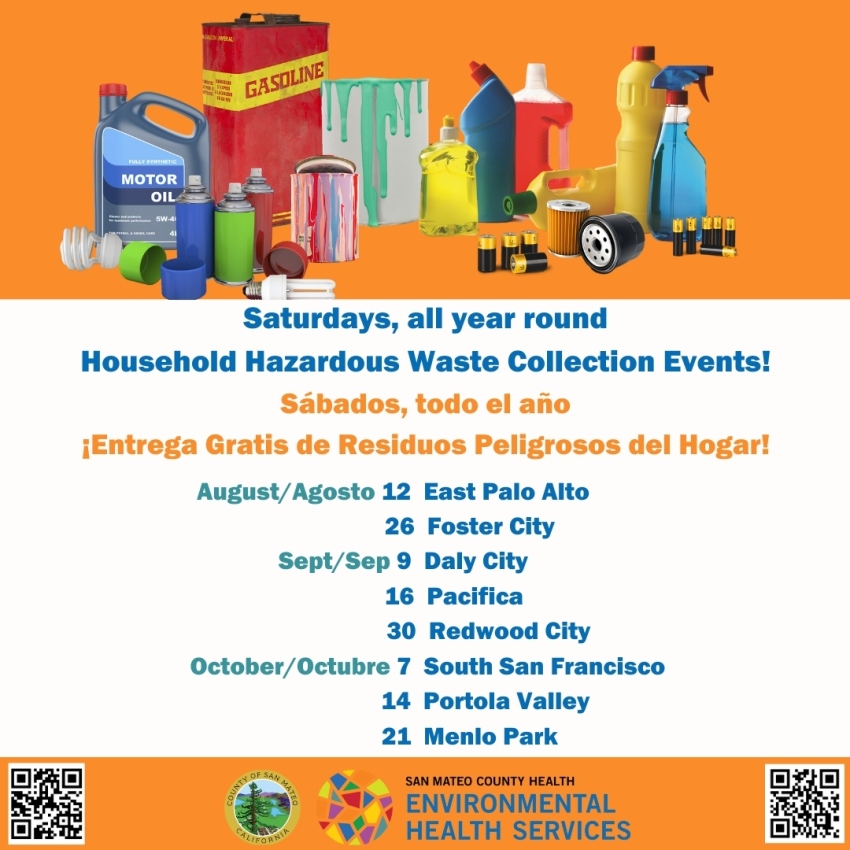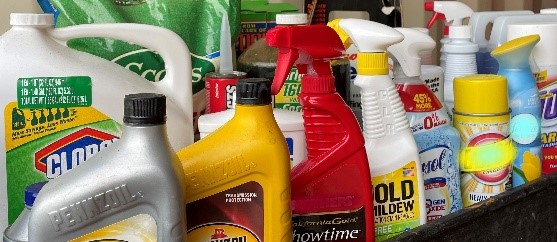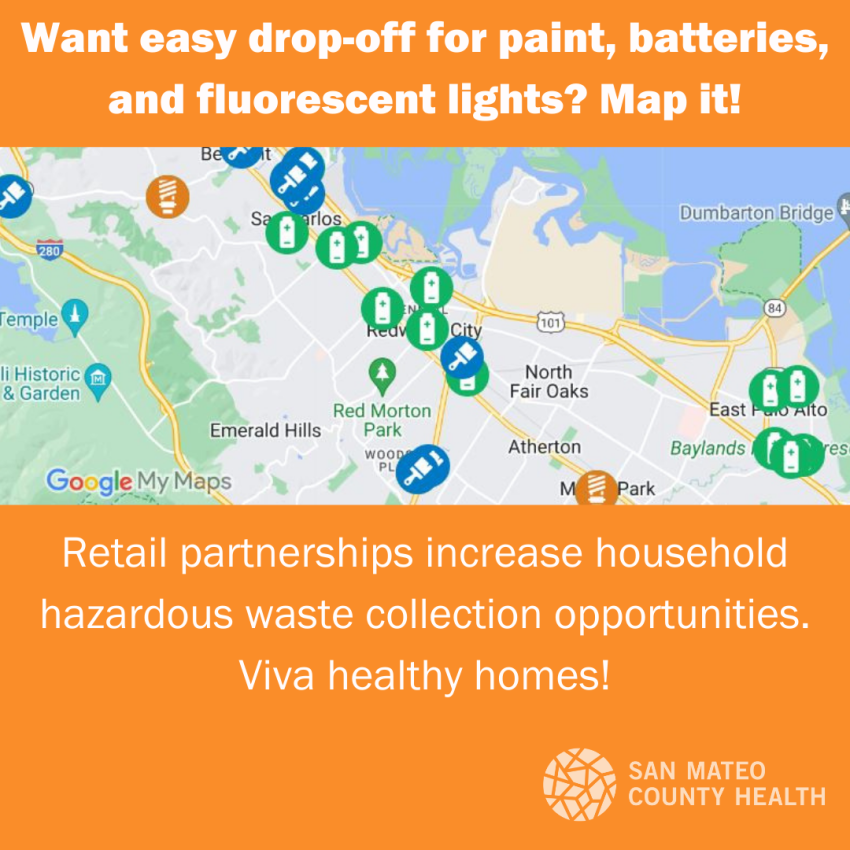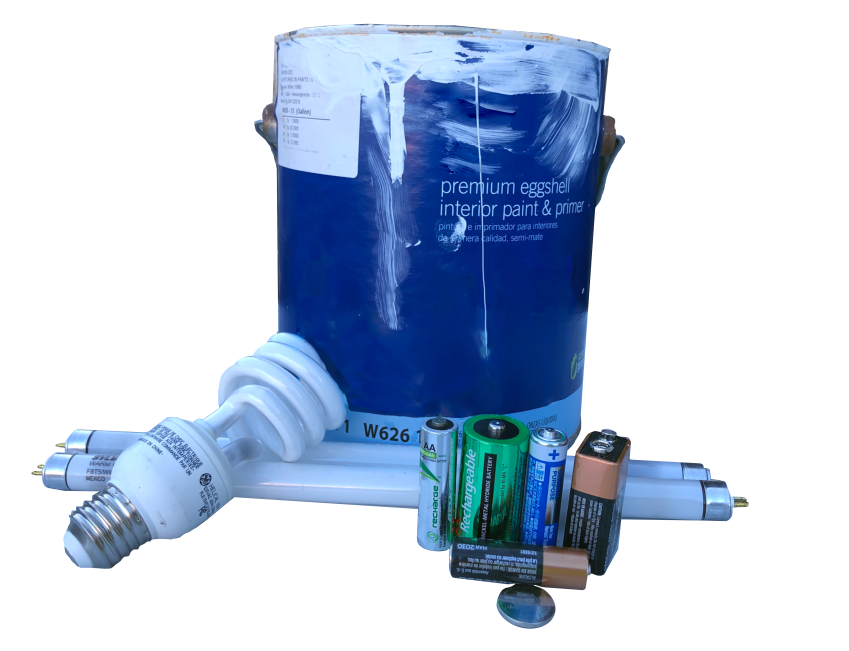Mark Your Calendars! Upcoming HHW Drop-off Events
The fall lineup of household hazardous waste drop-off events feature Foster City, Portola Valley, Daly City, Redwood City, South San Francisco, Pacifica, and, as always, San Mateo!

Interested in Second Chances? Our Give Away Program Makes it Happen (for home products, that is)!

Many items collected at San Mateo County’s Household Hazardous Waste Collection Facility are in good, usable condition. Products may include home and heavy-duty cleaners, solvents, auto supplies, pesticides, fertilizers, adhesives, paint, and stains. The Product Give Away Program redistributes these products for free each Thursday, Friday, and Saturday from 2-3 p.m. at the San Mateo County HHW Facility.
Neighborhood Retail Partners Make Safe Disposal of HHW Easy

Neighborhood retail partners make it easy and increase opportunities to clear our homes of hazardous waste because it does not belong at home! The San Mateo County Household Hazardous Waste Program partners with retail stores around the County to increase easy drop-off options for safe HHW recycling, right in your neighborhood! If you have paint*, household batteries, or fluorescent lights only, check out these convenient neighborhood drop-off sites.

Paint only? Visit paintcare.org.
*Visit Paintcare.org for neighborhood drop-off sites. PaintCare accepts latex, acrylic, water-based, alkyd, oil-based, enamel, primers, sealers, stains, and varnishes. They do not accept paint thinner, mineral spirits, solvents, or aerosol paints (spray cans). For these products, make a collection event appointment at smchealth.org/hhw-appt. Check paintcare.org for a complete list of accepted products.
Interested in avoiding the use of hazardous products? See our Safer Replacements article!



























